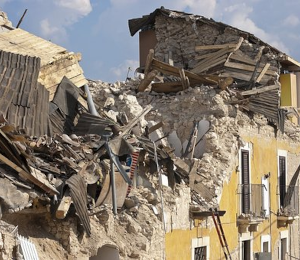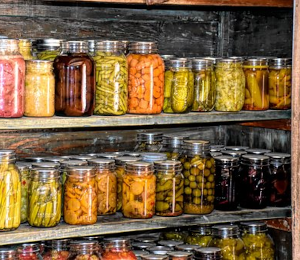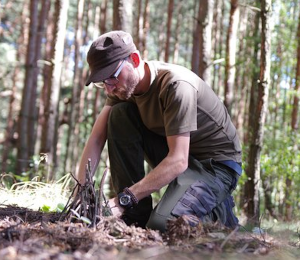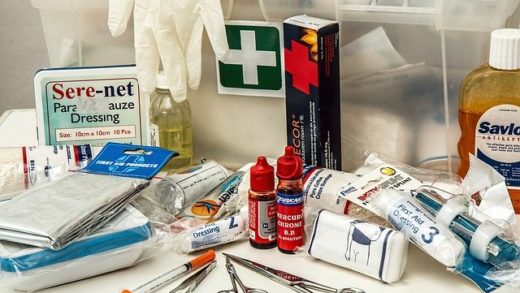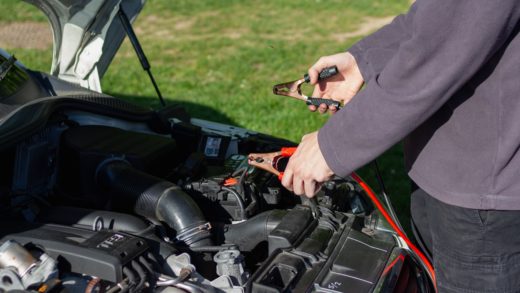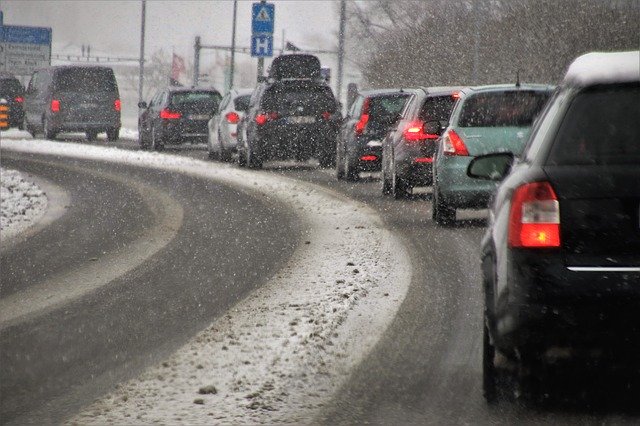
Why talk about evacuation?
At any time of the year, at any time of the day or night, a disaster or threat of a disaster could force people to leave their homes, offices, and schools or even the community in which they live. People evacuate a dangerous place to go to a safer place, and they usually need to act in a hurry. Preparing before an emergency by learning about the community’s warning systems and evacuation routes and by making evacuation plans and discussing them with household members is the best way to be ready in case an evacuation is necessary. Making plans at the last minute can be upsetting, create confusion, and cost precious time.
Why talk about sheltering?
Sometimes, a disaster or threat of disaster mandates that people find shelter in their home or in whatever building they happen to be. Safe shelter requires having a safe place to go and having the time to get there. It is important to know which room to shelter in and what to do to stay safe while there. At other times, people are forced to evacuate the immediate area, or even the entire region, and to shelter at public facilities. Knowing in advance what to expect and preparing for all sheltering scenarios will make sheltering experiences safer and more comfortable.
What if you have pets?
Because evacuation shelters generally do not accept pets, except for service animals, you must plan ahead to ensure that your family and pets will have a safe place to stay. Do your research early.
Contact hotels and motels outside your immediate area to check policies on accepting pets. Ask about any restrictions on number, size, and species. Ask if “no pet” policies would be waived in an emergency. Make a list of pet-friendly places and keep it handy. Call ahead for a reservation as soon as you think you might have to leave your home.
Check with friends, relatives, or others outside your immediate area. Ask if they would be able to shelter you and your animals, or just your animals if necessary. If you have more than one pet, you may have to be prepared to house them separately.
Make a list of boarding facilities and veterinary offices that might be able to shelter animals in emergencies and include 24-hour numbers.
Ask your local animal shelter if it provides foster care or shelter for pets in an emergency. This should be your last resort, as shelters have limited resources and are likely to be stretched to their limits during an emergency.
Evacuation
Core Actions
- Keep listening to local radio or television stations.
- If authorities tell you to evacuate immediately, grab essentials and go.
- If you have more time, prepare your home.
Consider your transportation options in case you have to evacuate. If you do not own or drive a car, ask your local emergency manager about plans for people without private vehicles.
If you are in an area that is being evacuated:
- Evacuate immediately if told to do so by authorities. Authorities do not ask people to leave unless they conclude that lives may be in danger.
- Listen to a local radio or television station and follow the instructions of local emergency officials. Local officials know the most appropriate advice for your particular situation.
- Wear long pants, a long-sleeved shirt, and sturdy shoes. The most common injury following disasters is cut feet.
- Lock your home. Secure your home as you normally would when leaving for an extended period.
- Take your pets with you when you leave, provided you can do so without endangering yourself.
- Use travel routes specified by local authorities. Since certain areas may be impassable or dangerous, avoid shortcuts. Do not drive through moving water. Barriers are placed for your safety; if you come upon a barrier, follow posted detour signs.
If you have only moments before leaving, grab your Disaster Supplies Kit and go. If it is impossible for you to take your Disaster Supplies Kit, at least try to take the following:
- Any pets that you can get without endangering yourself. You may not be able to come back for them later, as it may be too dangerous to return.
- First aid kit, including prescription medications, dentures, extra eyeglasses, and hearing aid batteries
- A change of clothes and a sleeping bag or blankets for each household member
- Flashlight, radio, and water
- Car keys and house keys
- Cash and personal identification
If you have time before leaving and local officials have not advised an immediate evacuation, prepare your home before evacuating. Quickly take steps to protect your home and belongings. Depending on the threat, you should:
- Bring all pets into the house and confine them to one room, if you can. If necessary, make arrangements for your pets. Pets may try to run if they feel threatened. Keeping them inside and in one room will allow you to find them quickly if you need to leave. If you have large, unusual, or numerous animals, start evacuating them or moving them to your shelter area (if you are sheltering in place) as soon as you are aware of impending danger. If you are using a horse or other trailer to evacuate your animals, move early rather than wait until it may be too late to maneuver a trailer through slow traffic, high winds, and heavy rain.
- Put your Disaster Supplies Kit in your vehicle, or by the door if you are being picked up or may be leaving on foot. In some disaster situations, such as tsunami or wildland fire, it is better to leave by foot than wait for transportation. Carry what you can, selecting the items most essential to your health and safety.
- Tell your out-of-town contact in your Family Disaster Plan where you are going and when you expect to get there. Relatives and friends will be concerned about your safety. Letting someone know your travel plans will help relieve the fear and anxiety of those who care.
- Bring things indoors. Lawn furniture, trash cans, children’s toys, garden equipment, clotheslines, hanging plants, and any other objects that may be blown around or swept away should be brought indoors.
- Look for potential hazards. Look for coconuts, unripened fruit, and other objects in trees around your property that could blow or break off and fly around in strong winds. Cut these objects off and store them indoors until the storm is over. If you have not already cut away dead or diseased branches or limbs from trees and shrubs, leave them alone. Local rubbish collection services will not have time before a major storm to pick anything up.
- Turn off electricity at the main fuse or breaker, and turn off water at the main valve.
- Leave natural gas on, unless local officials advise otherwise, because you will need it for heating and cooking when you return home. If you turn gas off, a licensed professional is required to turn it back on, and it may take weeks for a professional to respond.
- Turn off propane gas service valves. Propane tanks often become damaged or dislodged in disasters.
- If strong winds are expected, cover the outside of all the windows of your home. Use shutters that are rated to provide significant protection from windblown debris, or put pre-fit plywood coverings over all windows.
- If flooding is expected, consider using sand bags to keep water away from your home. It takes two people about one hour to fill and place 100 sandbags, giving you a wall one-foot (0.3-meter) high and 20-feet (6-meters) long. Make sure you have enough sand, burlap or plastic bags, shovels, strong helpers, and time to place them properly.
Sheltering
Core Action
- Prepare to be self-sufficient for at least three days.
Taking shelter, having a safe place to go and having the time to get there, are often critical in protecting yourself and your household in times of disaster. Sheltering can take several forms. Sheltering-in-place is appropriate when conditions require that you take protection in your home, place of employment, or other location where you are when a disaster strikes.
How and where to shelter-in-place depend entirely on the emergency situation. For instance, during a tornado warning you should go to an underground room or a “wind safe” room, if such a room is available. During a chemical release, on the other hand, you should take shelter in a room above ground level.
Shelter-in-Place/Fallout Shelter
- In case of a chemical attack, take shelter on an upper floor in an interior space without windows if possible. Seal the space using plastic sheeting and duct tape. Ten square feet of floor space per person will provide sufficient air to prevent carbon dioxide buildup for up to five hours.
- In case of nuclear attack, take shelter from fallout radiation below ground in an interior space without windows if possible. Put as much heavy, dense material between you and the outside as possible.
Taking shelter may also be longer term, as when you stay in your home for several days without electricity or water services following a winter storm. “Shelter” also refers to a place where people displaced by a disaster are housed and fed by an organization like the American Red Cross. The following information pertains to long-term, in-place sheltering.
Long-Term Sheltering at Home
Core Action:
- Stay put until authorities say you can leave.
Sometimes, disasters make it unsafe for people to leave their residences for extended periods. Winter storms, floods, and landslides may isolate individual households and make it necessary for each household to take care of its own needs until the disaster abates, such as when snows melt and temperatures rise, or until rescue workers arrive. Your household should be prepared to be self-sufficient for at least three days if cut off from utilities and from outside supplies of food and water. Being prepared for two weeks is safer.
If you are sheltering at home, you should:
- Stay in your shelter until local authorities say it is safe to leave. The length of your stay can range from a few hours to two weeks.
- Maintain a 24-hour communications watch. Take turns listening to local radio or television stations. Listen to battery-operated radio or television for local news updates for short periods of time to preserve the batteries.
- For information on portable-generator safety and carbon monoxide poisoning, see Portable Generators.
Staying Safe After a Disaster
Core Actions:
- Follow your plan.
- Stay alert to hazards.
- Do not use candles
After a disaster occurs, you may be in your home, in a public shelter in your community, or far away from your home. No matter where you are, it is probable that many other people are experiencing what you are going through. You will be glad that you and the other members of your household made a plan and practiced it. No matter where you are after a disaster, you should:
- Remain calm and patient. Staying calm and patient will help you move safely and avoid delays or accidents caused by irrational behavior. Many people will be trying to accomplish the same things you are for the safety of their families. Patience will help everyone get through a difficult situation more easily.
- Put your Family Disaster Plan into action.
- Listen to a local radio or television station for news and instructions. Local authorities know the most appropriate advice for your community’s particular situation.
- Check for injuries. Give first aid and get help for seriously injured people. Taking care of yourself first will allow you to help others safely until emergency responders arrive.
- Help people who require special assistance—infants, elderly people, those without transportation, large families who may need additional help in an emergency situation, people with disabilities, and the people who care for them.
- Use your Disaster Supplies Kit.
If you are at home, or when you return home, you should:
- Wear a long-sleeved shirt, long pants, and sturdy shoes. Disaster areas and debris contain many hazards. The most common injury following disasters is cut feet.
- Check for damage in your home. Disasters can cause extensive damage, sometimes in places you least expect. Look carefully for any potential hazards.
- Use battery-powered lanterns or flashlights when examining buildings. Battery powered lighting is the safest and easiest and does not present a fire hazard for the user, occupants, or building.
- DO NOT USE CANDLES. Candles can easily cause fires. They are quiet and easily forgotten. They can tip over during earthquake aftershocks or in a gust of wind. Candles invite fire play by children.
- Look for fire hazards, such as broken or leaking gas lines, flooded electrical circuits, or submerged furnaces or electrical appliances.
- Check for gas leaks. If you smell gas or hear a blowing or hissing noise, open a window and get everyone outside quickly. Turn off the gas at the outside main valve if you can, and call the gas company from a neighbor’s home. If you turn off the gas for any reason, it must be turned back on by a professional.
- Look for electrical system damage. If you see sparks or broken or frayed wires, or if you smell burning insulation, turn off the electricity at the main fuse box or circuit breaker. If you have to step in water to get to the fuse box or circuit breaker, call an electrician first for advice. Electrical equipment should be checked and dried before being returned to service.
- If you have no electricity, take precautions to keep food safe.
- Check for damage to sewage and water lines. If you suspect sewage lines are damaged, avoid using the toilets and drains and call a plumber. If water pipes are damaged, contact the water company and avoid using water from the tap.
- If your tap water is not working or is not safe, ensure that you drink only clean water. (See Drinking Water Safety.)
- If you need to dispose of sewage, ensure that you do it properly. (See Emergency Sanitation.)
- Clean up spills immediately. Especially important to clean up are spilled medicines, bleach, gasoline, and other flammable liquids.
- Watch for loose plaster and ceilings that could fall.
- Take pictures of the damage, both of the building and its contents, for insurance claims.
- Watch animals closely. Keep all your animals under your direct control. Pets may become disoriented, particularly if the disaster has affected scent markers that normally allow them to find their homes. Pets may be able to escape from your home or your fence may be broken. Be aware of hazards at nose and paw or hoof level, particularly debris, spilled chemicals, fertilizers, and other substances that might not seem to be dangerous to humans. In addition, the behavior of pets may change dramatically after an earthquake, becoming aggressive or defensive, so be aware of their well-being and take measures to protect them from hazards, including displaced wild animals, and to ensure the safety of other people and animals.
- Let your out-of-town contact know you have returned home, and then do not use the telephone again during the emergency period unless it is to report a life-threatening emergency. Telephone lines are frequently overwhelmed in disaster situations. They need to be clear for emergency calls to get through.
- Make sure you have an adequate water supply in case service is cut off. Water is often contaminated after major disasters. (See Storing Water and Drinking Water Safety.)
- Stay away from downed power lines and report them immediately. Getting damaged utilities turned off will prevent further injury or damage. If you see downed power lines, set out a flare and stay on the scene to warn others until authorities arrive if possible.
Carbon Monoxide Alarms
- Every home should have properly installed and maintained carbon monoxide (CO) alarms. Install battery-operated CO alarms or plug-in CO alarms with battery back-up in your home, according to the manufacturer’s installation instructions. CO alarms should be certified to the requirements of the latest safety standards for CO alarms (UL 2034, IAS 6-96, or CSA 6.19.01). It is especially important to have a CO alarm near sleeping areas.
- Test and maintain your CO alarms according to the manufacturer’s instructions. CO alarms can help detect CO, a colorless, odorless gas produced by burning any fuel. Exposure to high levels of CO can cause death. The initial symptoms of CO poisoning are similar to the flu and include dizziness, fatigue, headache, nausea, and irregular breathing.
Because of the risk of CO poisoning, never operate unvented fuel-burning appliances in any closed room or where people are sleeping. CO poisoning from fuel-burning appliances kills people in the United States each year.
CO can leak from faulty furnaces or fuel-fired heaters or can be trapped inside a home by a blocked chimney or flue. Burning charcoal inside a home produces CO. Running an automobile engine in an attached garage can cause CO to enter a home and so can running a portable generator if it is near windows, doors, or vents, even if it is outdoors. Never use gas appliances such as ranges, ovens, or clothes dryers for heating your home. Never use a portable generator in an enclosed or partially enclosed space, including in your home or in a garage, basement, crawl space, or other partially enclosed area, even with ventilation. Locate a generator outdoors and away from doors, windows, and vents that could allow CO to come indoors. Generators can produce high levels of deadly CO very quickly.


